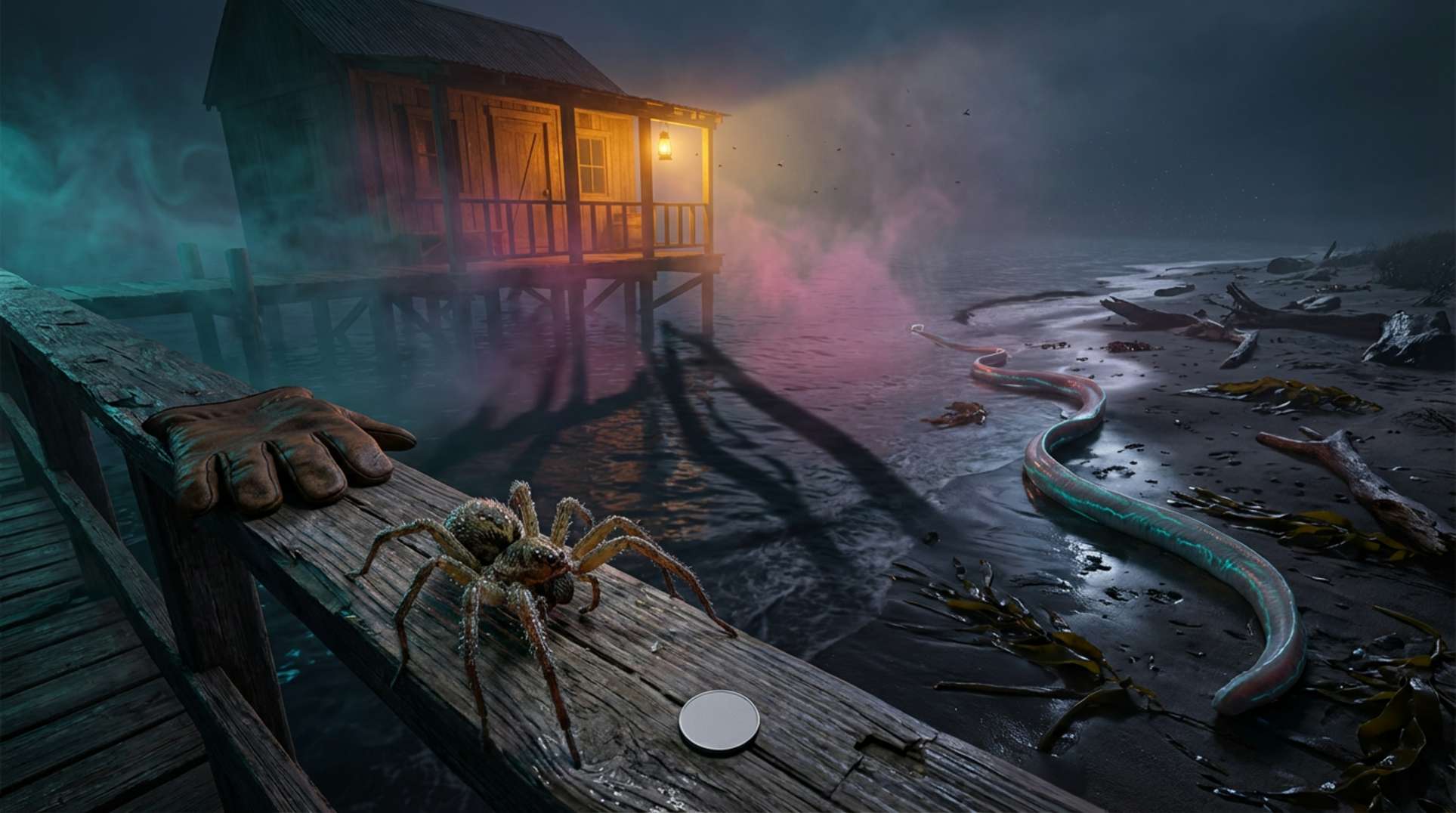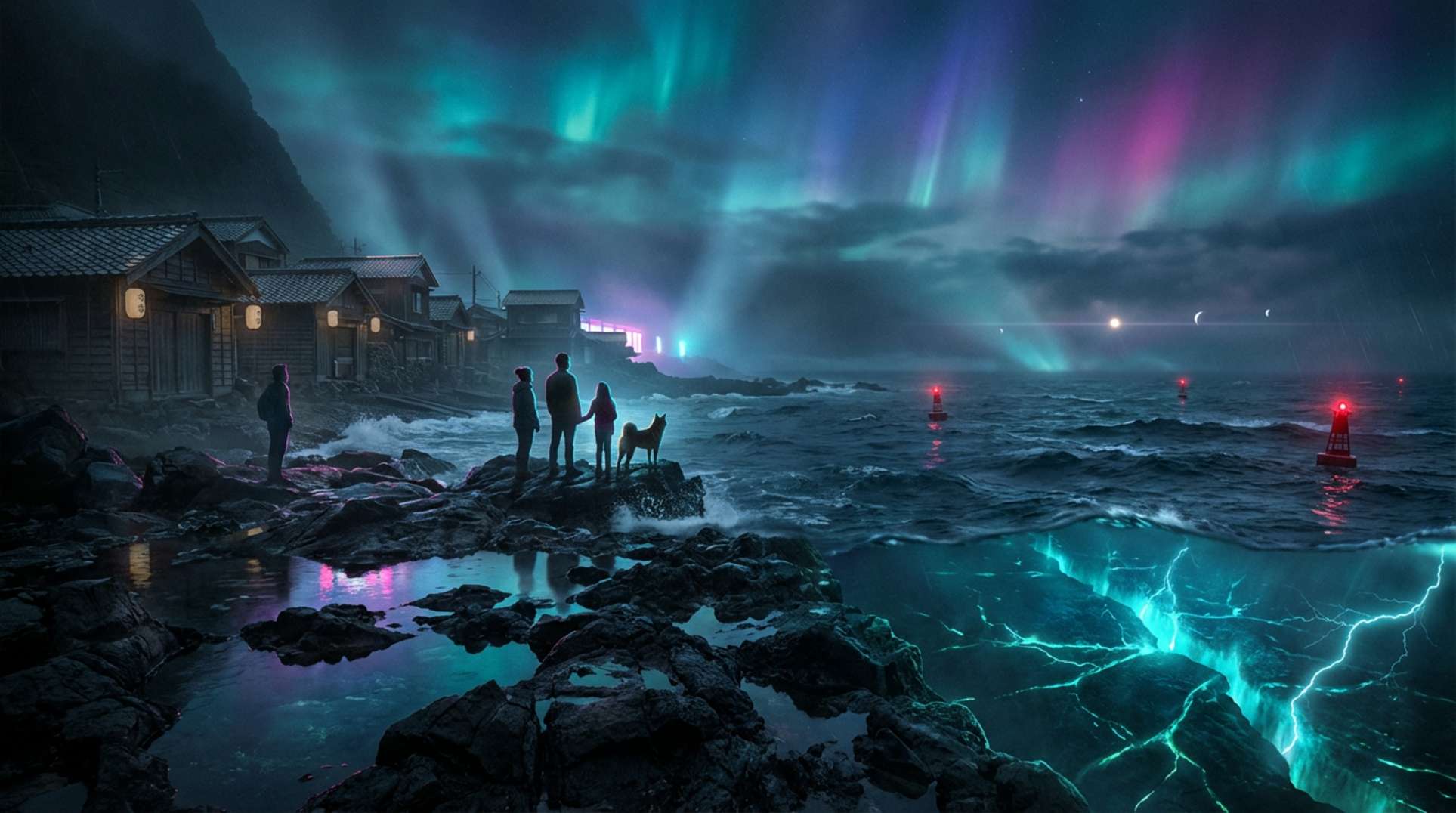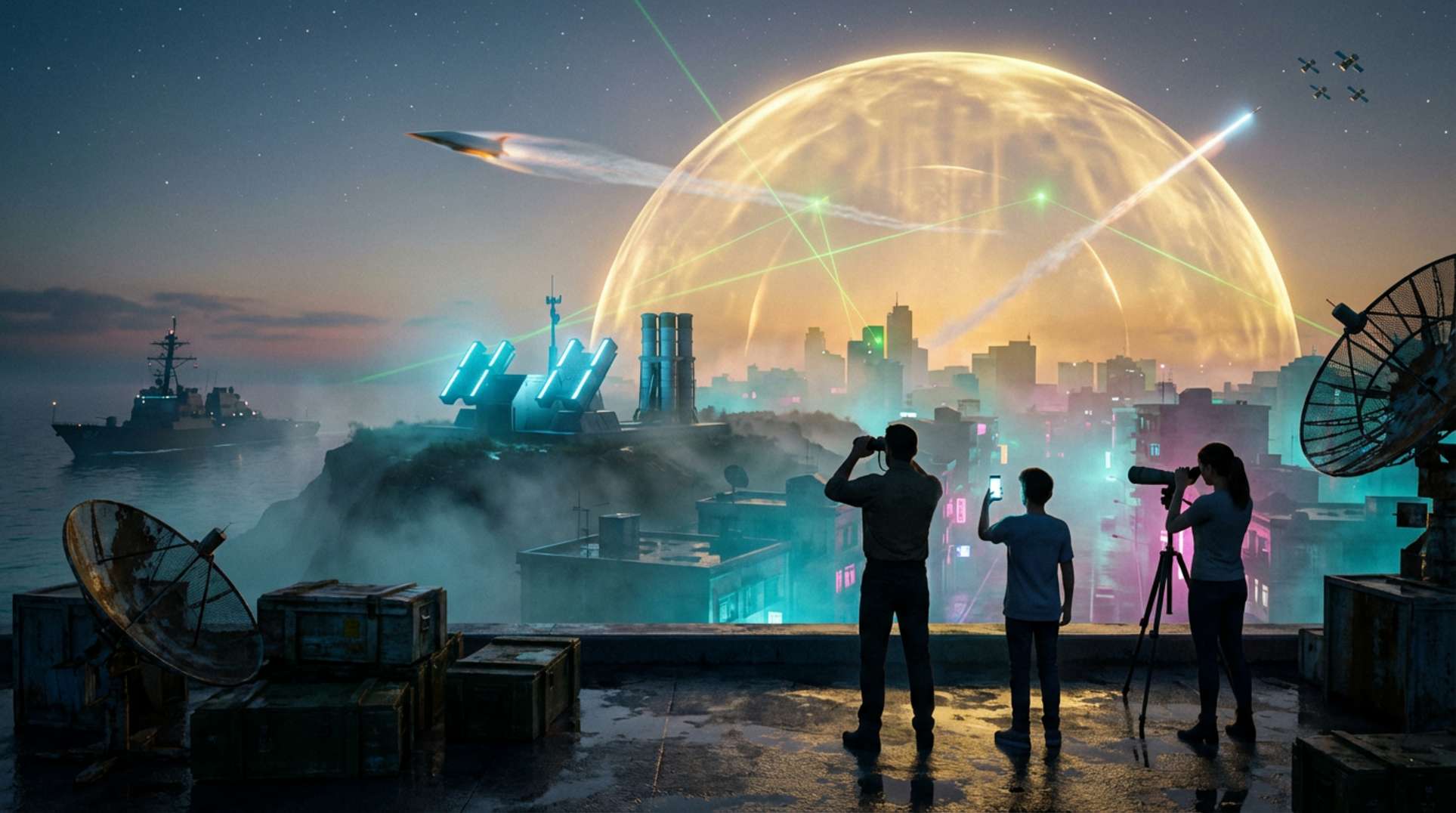UFO sightings have intrigued and puzzled people for decades. From ancient records to modern-day encounters, these mysterious events have sparked countless theories and investigations. This article dives into the history, famous cases, myths, psychological impacts, and scientific perspectives on UFO sightings. By examining the evidence and exploring various theories, we aim to shed light on these enigmatic occurrences.
Key Takeaways
- UFO sightings have been reported throughout history, with notable cases in both ancient times and the 20th century.
- Several famous UFO incidents, such as the Roswell Incident and Phoenix Lights, have captured public attention and sparked widespread debate.
- Many myths and misconceptions about UFOs exist, often fueled by media portrayals and a lack of scientific evidence.
- Belief in UFOs can significantly impact individuals and communities, influencing belief systems and social dynamics.
- Advancements in technology have changed the way we detect, record, and share UFO sightings, but skepticism remains high in the scientific community.
Historical Overview of UFO Sightings

Early Reports and Ancient Encounters
The fascination with unidentified flying objects (UFOs) is not a modern phenomenon. Ancient texts and artwork from various cultures depict strange aerial phenomena that some interpret as early UFO sightings. For instance, ancient Indian texts describe flying machines called Vimanas, while medieval art often shows mysterious objects in the sky. These early reports suggest that humanity has long been intrigued by the unknown.
The Modern Era: 20th Century Sightings
The modern era of UFO sightings began in the mid-20th century, particularly after World War II. In 1947, pilot Kenneth Arnold reported seeing nine shiny objects flying near Mount Rainier, Washington, coining the term "flying saucers." This sighting sparked widespread interest and led to numerous reports of similar phenomena. The U.S. Air Force launched Project Blue Book, cataloging 12,618 sightings from 1947 to 1969. Despite concluding that most sightings were explainable, the project did not quell public curiosity.
Government Investigations and Projects
Governments worldwide have conducted various investigations into UFO sightings. The U.S. government’s Project Blue Book is one of the most well-known, but other projects like the Advanced Aviation Threat Identification Program (AATIP) have also delved into the mystery. These investigations often aimed to determine whether UFOs posed a threat, especially during the Cold War. While many findings were inconclusive, the sheer number of reports kept the topic alive in public discourse.
The ongoing mystery of UFOs challenges our understanding of reality and invites us to explore the unknown with an open mind.
Famous UFO Sightings Around the World
Roswell Incident
The Roswell Incident is perhaps the most famous UFO event in history. In 1947, a mysterious object crashed near Roswell, New Mexico. The U.S. military initially reported it as a "flying disc," but later retracted the statement, claiming it was a weather balloon. This incident sparked widespread speculation and conspiracy theories about extraterrestrial life. The Roswell site has since become ground zero for UFO enthusiasts and researchers.
Phoenix Lights
In 1997, thousands of people in Phoenix, Arizona, witnessed a series of strange lights in the night sky. The lights appeared in a V-shaped formation and hovered for several minutes before disappearing. Despite numerous eyewitness accounts, the U.S. military explained the phenomenon as flares dropped during a training exercise. However, many remain skeptical of this explanation, believing it to be one of the most compelling UFO sightings.
Rendlesham Forest Incident
The Rendlesham Forest Incident occurred in December 1980 near a U.S. Air Force base in Suffolk, England. Multiple military personnel reported seeing strange lights and a metallic object in the forest. Some even claimed to have touched the craft. The event was documented in official reports, but explanations ranged from a misidentified lighthouse to a secret military project. The incident remains one of the most well-documented and debated UFO encounters in history.
The fascination with these famous UFO sightings continues to captivate the public, blending elements of mystery, skepticism, and wonder.
Debunking the Myths Surrounding UFO Sightings
Common Misconceptions
Many people believe that UFO sightings are always linked to extraterrestrial beings. However, most sightings can be explained by natural phenomena, human-made objects, or even hoaxes. It’s crucial to approach these claims with a healthy dose of skepticism. For instance, weather balloons, drones, and even the planet Venus have been mistaken for UFOs.
Role of Media in Shaping Public Perception
The media plays a significant role in shaping how the public perceives UFO sightings. Shows like Ground Zero Radio often sensationalize these events, making them seem more mysterious than they are. This can lead to widespread misinformation and fear. It’s important to critically evaluate the sources of such information.
Scientific Explanations
Scientists have offered various explanations for UFO sightings. Many of these involve atmospheric phenomena, optical illusions, or human psychology. For example, the phenomenon known as "ball lightning" has been mistaken for a UFO. Additionally, psychological factors like pareidolia—the tendency to see patterns where none exist—can also explain many sightings.
The mushrooming cultural influence of the great UFO awakening led Carl Jung to argue that these phenomena are modern myths rather than reality.
In summary, while UFO sightings are fascinating, they are often not what they seem. By understanding the common misconceptions, the role of media, and scientific explanations, we can better discern fact from fiction.
Psychological and Sociological Implications of UFO Sightings
Impact on Belief Systems
UFO sightings often intersect with existing spiritual and religious beliefs. People find comfort in the idea of benevolent extraterrestrial beings watching over humanity. This belief can act as a modern myth, filling a void left by traditional religions. It’s fascinating how these beliefs can shape our worldview and provide a sense of purpose.
Social Dynamics and Community Formation
The idea of UFOs can influence social dynamics in intriguing ways. Communities form around shared beliefs, creating a sense of belonging and identity. These groups often engage in discussions, meetings, and even conventions. This collective belief can foster both unity and division within society.
Individual and Collective Psyche
On an individual level, belief in UFOs can offer a sense of hope and wonder. It can also lead to cognitive dissonance when faced with conflicting information. Collectively, these beliefs can impact societal norms and values. The fascination with extraterrestrial life can drive scientific curiosity and technological advancements, but it can also lead to skepticism and ridicule.
The belief in UFOs serves as a mirror, reflecting our deepest hopes, fears, and aspirations. It challenges us to think beyond our earthly confines and consider our place in the universe.
The Role of Technology in UFO Sightings
Advancements in Detection and Recording
Technology has significantly advanced our ability to detect and record UFO sightings. Modern radar systems, high-resolution cameras, and satellite imagery have provided clearer and more reliable data. These tools have transformed UFO research, making it possible to capture detailed evidence that was previously unattainable. For instance, the Advanced Aviation Threat Identification Program (AATIP) utilized cutting-edge technology to investigate aerial phenomena.
Influence of Social Media
Social media platforms have played a crucial role in spreading information about UFO sightings. They allow witnesses to share their experiences instantly, reaching a global audience. This rapid dissemination of information can lead to increased public interest and further investigations. However, it also means that misinformation can spread just as quickly, complicating the task of discerning credible reports from hoaxes.
Technological Hoaxes
With the rise of technology, creating convincing hoaxes has become easier. Advanced software can generate realistic images and videos of UFOs, making it challenging to distinguish between genuine sightings and fabrications. Shows like Ground Zero with Clyde Lewis often discuss these technological hoaxes, highlighting the need for critical analysis and skepticism when evaluating UFO evidence.
The intersection of technology and UFO sightings underscores the importance of using advanced tools responsibly and maintaining a critical eye towards the information we consume.
The Scientific Community’s Perspective on UFO Sightings
Skepticism and Demand for Evidence
The scientific community has long approached UFO sightings with a healthy dose of skepticism. Many scientists demand strong evidence before accepting any claims of extraterrestrial encounters. This insistence on rigorous standards of evidence is crucial in separating fact from fiction. For instance, fuzzy videos and personal narratives, while engaging, are not enough to support extraordinary claims. The need for empirical data is paramount.
Notable Scientific Investigations
Over the years, there have been several notable investigations into UFO sightings. One such example is the Galileo Project, led by theoretical astrophysicist Avi Loeb. This initiative aims to search for potential evidence of alien technology here on Earth. Another significant effort is NASA’s recent study on unidentified aerial phenomena (UAPs), which reflects a shift in attitudes towards this once-taboo subject. The study, although modest in scope, aims to identify data sets that could advance our understanding of UAPs.
Potential for Future Research
The future of UFO research holds exciting possibilities. With advancements in technology, scientists are better equipped to investigate these phenomena. The involvement of reputable organizations like NASA brings a new level of credibility to the field. As more data becomes available, the potential for groundbreaking discoveries increases. The scientific community remains open to exploring these mysteries, provided the evidence meets the rigorous standards required for scientific inquiry.
Theories Behind UFO Sightings

Extraterrestrial Hypothesis
The most popular theory is the extraterrestrial hypothesis, which suggests that UFOs are spacecraft from other planets. This idea has been fueled by numerous sightings and reports, including the famous Roswell Incident. Proponents argue that the advanced technology observed in these sightings could not have been developed by humans.
Interdimensional Theories
Another intriguing theory is that UFOs are not from outer space but from other dimensions. This interdimensional theory posits that these objects can move between different realities, explaining their sudden appearances and disappearances. Some believe that these beings have found ways to traverse dimensions, making them appear as UFOs in our world.
Secret Military Technology
A more down-to-earth explanation is that many UFO sightings are actually secret military technology. Governments around the world have been known to develop advanced aircraft and drones, which could easily be mistaken for alien spacecraft. This theory gained traction during the Cold War when both the U.S. and the Soviet Union were developing cutting-edge technology in secrecy.
As the new series of the BBC’s paranormal looks into alleged UFO sightings, one aerospace expert says accessible, modern technology puts us in a stronger position to understand these phenomena.
While these theories offer different explanations, the true nature of UFOs remains a mystery. Each theory has its own set of believers and skeptics, making the topic endlessly fascinating and controversial.
Media and Public Reactions to UFO Sightings

Mainstream Media Coverage
Mainstream media has played a significant role in shaping public perception of UFO sightings. News outlets often cover these events with a mix of skepticism and intrigue. For instance, the 2006 O’Hare International Airport sighting became the most-read story on The Chicago Tribune’s website, highlighting the public’s fascination with such phenomena. However, the Federal Aviation Administration (FAA) dismissed it as a “weather phenomenon,” showing the media’s tendency to balance sensationalism with official explanations.
Alternative Media Platforms
Alternative media platforms delve deeper into UFO sightings, often exploring theories that mainstream outlets avoid. Podcasts, YouTube channels, and specialized websites provide a space for enthusiasts to discuss and dissect sightings. Shows like "Into the Parabnormal" offer in-depth analyses and interviews with experts and witnesses, keeping the conversation alive and engaging a dedicated audience.
Public Opinion and Cultural Impact
Public opinion on UFO sightings is divided. Some people are skeptical, while others are convinced that these sightings are evidence of extraterrestrial life. This division is reflected in popular culture, where UFOs are a common theme in movies, TV shows, and books. The ongoing debate keeps the topic relevant and ensures that UFO sightings remain a part of our collective consciousness.
The fascination with UFOs continues to captivate and divide public opinion, blending elements of science fiction and potential reality.
Bold: The 2006 O’Hare International Airport sighting became the most-read story on The Chicago Tribune’s website.
Italics: The Federal Aviation Administration (FAA) dismissed it as a “weather phenomenon.”
The Future of UFO Sightings Research
Potential for First Contact
Are we on the brink of meeting extraterrestrial beings? The idea of first contact has fascinated us for decades. With the rapid development of technology, it’s not entirely out of the question. Imagine the advancements in the next 1,000 years, let alone 5,000 or 10,000 years! The possibilities are endless and could be incredible.
Ethical and Technological Considerations
As we move closer to potential contact, we must consider the ethical implications. How do we ensure planetary protection? This involves not only protecting Earth from possible extraterrestrial life forms but also preventing contamination of other solar system bodies by Earth life. It’s a delicate balance that requires careful planning and international cooperation.
Speculative Scenarios
What if we do make contact? The scenarios range from peaceful exchanges of knowledge to more apocalyptic outcomes. It’s crucial to prepare for all possibilities. We could see a new era of technological growth or face challenges that test our very survival. The future is uncertain, but one thing is clear: we must be ready for anything.
The future of UFO research is filled with endless possibilities and challenges. As we continue to explore the unknown, we must remain open-minded and prepared for any outcome.
Key Figures and Sources in UFO Research
Influential Researchers and Whistleblowers
Several individuals have significantly contributed to the field of UFO research. Robert Bigelow, a businessman, founded the National Institute for Discovery Science in 1995 to explore the possibility of alien life. This group included former astronauts and even a sitting U.S. senator, Harry Reid. Another key figure is Luis Elizondo, who led the Pentagon’s Advanced Aerospace Threat Identification Program (AATIP) starting in 2007. Elizondo has been vocal about the need for transparency in UFO investigations.
Popular Culture Influences
UFO research has also been shaped by popular culture. Shows like "The X-Files" and movies such as "Close Encounters of the Third Kind" have brought the topic into the mainstream. These media portrayals often blend fact and fiction, influencing public perception and interest in UFO phenomena.
Notable Publications and Documentaries
Numerous publications and documentaries have delved into the subject of UFOs. One notable example is the book "Ground Zero: Aftermath," which explores various UFO sightings and their implications. Documentaries like "Unacknowledged" and "The Phenomenon" have also provided in-depth looks at the evidence and theories surrounding UFO encounters.
The ongoing fascination with UFOs is fueled by a mix of credible research, popular culture, and investigative journalism. This blend keeps the public intrigued and the debate alive.
The Galactic Federation and UFO Religions
Role in New Age Movements
The concept of the Galactic Federation is popular in New Age circles. Many people claim to channel messages from these extraterrestrial beings, believing that the Federation is here to help humanity evolve spiritually. This idea has gained traction through books, seminars, and online communities. The Ashtar movement is studied by academics as a prominent form of UFO religion.
Channeling and Contactee Experiences
Channeling and contactee experiences are significant parts of the Galactic Federation narrative. Individuals claim to receive messages from extraterrestrial beings, often sharing these insights on shows like The Secret Teachings. These messages usually emphasize peace, technological advancement, and spiritual growth. However, the credibility of these claims is often questioned, with critics pointing out the lack of verifiable evidence.
Criticism and Skepticism
Many skeptics argue that the idea of a Galactic Federation sounds like something straight out of a sci-fi movie. They point out that most of the stories come from unreliable sources or people seeking attention. It’s crucial to question the credibility of these claims and not just accept them at face value. Critics often highlight the lack of tangible proof, arguing that if such an advanced civilization existed, we would have more concrete evidence by now.
The belief in a Galactic Federation serves as a mirror, reflecting our deepest hopes, fears, and aspirations. It challenges us to think beyond our earthly confines and consider our place in the universe.
Conclusion
In the end, the topic of UFO sightings and extraterrestrial encounters remains a blend of mystery and speculation. While many stories and claims lack solid evidence, they continue to capture our imagination and spark curiosity. Whether it’s the idea of advanced alien civilizations or the possibility of first contact, these concepts push us to explore the unknown and question our place in the universe. As we advance in technology and science, perhaps one day we will uncover the truth. Until then, the fascination with UFOs and extraterrestrial life will keep us looking to the skies, wondering what might be out there.
Frequently Asked Questions
What is a UFO?
A UFO stands for Unidentified Flying Object. It’s something seen in the sky that doesn’t have an easy explanation.
When did the modern era of UFO sightings begin?
The modern era of UFO sightings started after World War II, around the late 1940s.
What was the Roswell Incident?
The Roswell Incident refers to a 1947 event where an object crashed in Roswell, New Mexico. Some people think it was an alien spacecraft, but the government says it was a weather balloon.
Are there scientific explanations for UFO sightings?
Yes, many UFO sightings can be explained by natural phenomena, human-made objects, or even hoaxes.
What is the Extraterrestrial Hypothesis?
The Extraterrestrial Hypothesis suggests that some UFOs are actually spacecraft from other planets.
How has the media influenced public perception of UFOs?
The media has played a big role in shaping how people think about UFOs, often sensationalizing stories and spreading myths.
What is Project Blue Book?
Project Blue Book was a U.S. Air Force project that investigated UFO sightings from 1952 to 1969.
What are some famous UFO sightings?
Some famous UFO sightings include the Roswell Incident, the Phoenix Lights, and the Rendlesham Forest Incident.




